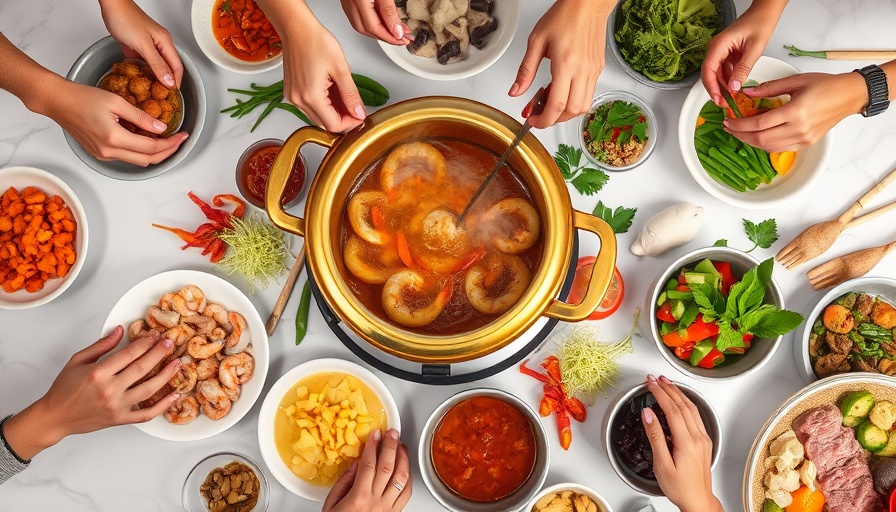A Taste of the Sea: Must-Try Foods in Yeosu, South Korea
Yeosu is not just a picturesque coastal city; it’s also a culinary destination that reflects the rich flavors of South Jeolla Province—famous for bold, diverse, and deeply satisfying cuisine. With its close proximity to the sea, Yeosu offers some of the freshest seafood in Korea, paired with traditional dishes you won't easily find elsewhere. Whether you're wandering the lively fish markets or dining in a quiet harbor-side restaurant, these local specialties are a must-try for anyone visiting Yeosu.
1. Grilled Galchi (갈치구이 / Grilled Hairtail Fish)
Yeosu is best known for its galchi, or cutlassfish, which is long, silver, and full of flavor. The fish is typically grilled whole and served on a platter, its skin perfectly crisped and its flesh soft and juicy. It pairs wonderfully with rice and banchan (side dishes), and is often dipped in a tangy soy-vinegar sauce.
Where to eat: Yeosu Fish Market or local restaurants near the harbor or in Dolsan.
2. Hwareo-Hoe (회 / Raw Fish Platter)
Fresh raw fish, or hoe, is a Yeosu classic. Served sashimi-style, thin slices of freshly caught flounder, rockfish, or snapper are arranged beautifully and eaten with cho-gochujang (vinegared chili paste) or soy sauce with wasabi. Wrap it in lettuce with garlic and green chili for the full Korean-style experience.
Where to eat: Local hoe houses near the fish market or waterfront.
3. Ganjang Gejang (간장게장 / Raw Marinated Crab)
Often called "rice thief" for how quickly it makes you devour a bowl of rice, this dish features raw blue crab marinated in soy sauce-based brine. The meat becomes tender and richly flavored, and the best part is scooping crab roe and soy sauce into a warm spoonful of rice. It’s a delicacy with deep roots in Jeolla cuisine.
Where to eat: Specialty gejang restaurants near Yeosu Expo Station or in traditional markets.
4. Samhap (삼합 / Fermented Skate with Pork and Kimchi)
This bold, acquired taste combines three strong flavors: hongeo (fermented skate, known for its ammonia-like smell), bossam (boiled pork), and aged kimchi. Together, they form a uniquely pungent, savory bite that’s beloved in southern Korea. While not for everyone, it's a cultural experience worth trying.
Where to eat: Traditional restaurants in central Yeosu or near the market.
5. Sea Urchin Bibimbap (성게비빔밥 / Seongge Bibimbap)
A local delicacy, this dish features raw or lightly cooked sea urchin (seongge) atop warm rice, mixed with vegetables, sesame oil, and seaweed. It’s creamy, briny, and rich in umami—perfect for seafood lovers looking to try something new and uniquely Korean.
Where to eat: Small restaurants near the coast, especially in Odongdo or Jasan Park areas.
6. Kkotge Tang (꽃게탕 / Spicy Blue Crab Soup)
Blue crabs are simmered in a rich, spicy broth with tofu, vegetables, and perilla leaves. The soup is warming and full of deep seafood flavor. Be prepared to use your hands—getting the meat out of the crabs is part of the fun.
Where to eat: Harbor-side seafood restaurants or traditional Korean eateries.
7. Gul Jeon (굴전 / Oyster Pancakes)
Especially popular in winter, these battered and pan-fried oyster pancakes are crispy on the outside and soft and juicy inside. Often served as a side dish or appetizer, they go perfectly with a glass of makgeolli (rice wine).
Where to eat: Seasonal markets and eateries near Yeosu's fishing ports.
8. Jangeo-Gui (장어구이 / Grilled Eel)
Grilled eel is another Yeosu specialty, known for its rich flavor and stamina-boosting qualities. It’s marinated in a soy-based sauce and grilled over charcoal until the skin crisps. Served with rice, perilla leaves, and ssamjang (spicy soybean paste), it’s a hearty, satisfying meal.
Where to eat: Jangeo specialty restaurants near Dolsan Bridge or Yeosu Expo area.
9. Nakji Bokkeum (낙지볶음 / Spicy Stir-fried Octopus)
This dish features baby octopus stir-fried in a fiery red chili sauce, served with vegetables and sometimes noodles or rice. The texture is chewy and the flavor intense, making it a favorite for those who like their food with a spicy kick.
Where to eat: Downtown Yeosu restaurants or street stalls.
10. Banchan (Side Dishes) Featuring Local Seaweed and Anchovies
In Yeosu, the side dishes alone can be a culinary journey. Look out for local specialties like marinated anchovies (myeolchi bokkeum), pickled seaweed, and seasoned kelp. These are often homemade and vary from place to place, showcasing the depth of Jeolla-do’s culinary tradition.
Where to eat: Practically every local restaurant—banchan comes free with meals.
11. Local Market Street Food
At night, Yeosu’s fish markets and walking streets come alive with stalls selling spicy tteokbokki (rice cakes), ojingeo twigim (fried squid), and odeng (fish cake soup). For something sweet, try hotteok (syrup-filled pancakes) or yeot (traditional Korean taffy).
Where to eat: Yeosu Fish Market, especially in the evening.
Yeosu’s food scene is an extension of its identity—rich, ocean-fed, and deeply rooted in Korean tradition. Whether you're tasting marinated crab for the first time or savoring grilled fish while watching the sunset, each
 Add Row
Add Row  Add
Add 




Write A Comment